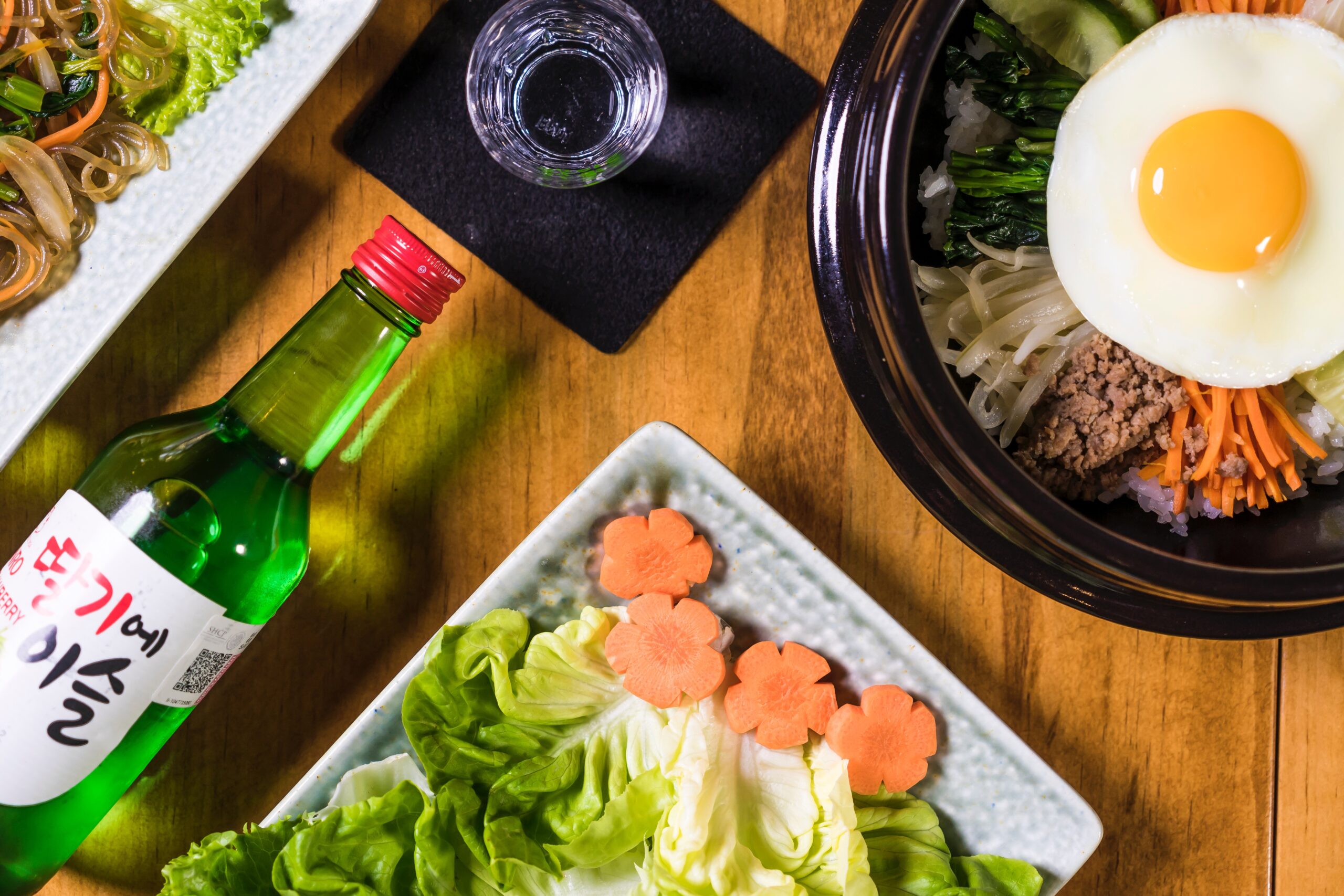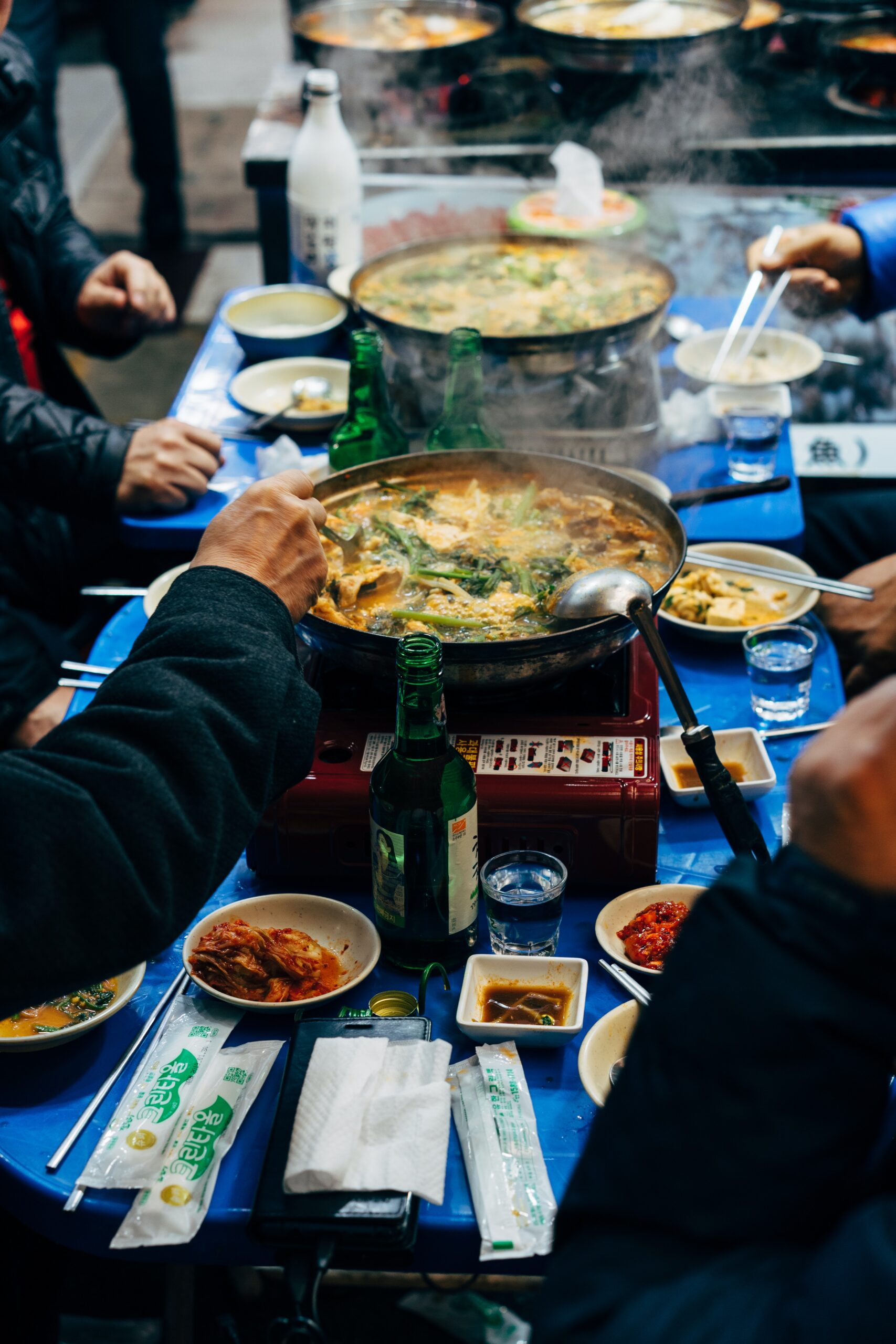The Korean culture is sweeping the globe. Hallyu (Korean Wave), which encompasses popular culture such as contemporary music, television dramas, and films, is expanding its influence in fields such as literature and the performing arts. Korean cuisine is not an exception. From Buddhist temple dishes to kimchi, bulgogi (marinated grilled beef), and bibimbap (bowl of rice combined with meat and assorted vegetables), people all over the world adore Korean cuisine.
Despite the worldwide enthusiasm for numerous aspects of Korean culture, alcohol is relatively unknown. This article will concentrate on the traditional Korean distilled liquor Munbaeju and its significance in Korean drinking culture.
Korean Drinking Traditions
For Koreans raised in Korea, refusing an invitation to drink with an elder is often viewed as disrespectful. Only if you have religious or medical reasons, or if you are a foreigner or foreign-born Korean, may you respectfully exit the room.
Upon the conclusion of the workweek and the beginning of the evening, there are typically multiple rounds of drinking and bar-hopping. Each of these is known as a ‘cha’. Round 1 or ‘il cha’ is typically held at a location where you can consume food and begin imbibing.
No one is anticipated to depart following this round. The toughest drinkers will make it to Round 5 or ‘oh cha’, but by that point, only a handful of the original party members are usually still present. Depending on the magnitude of your celebration, the night can last even longer, as some establishments are open 24 hours a day.
In Korea, drinking culture is not restricted to the corporate world or office employees. In fact, professors are permitted to drink with students in order to break down social barriers, and going out for a supper and a drink is encouraged in virtually all industries.
It is viewed as a method to strengthen relationships among coworkers, thereby boosting office morale. Visiting a noraebang (Korea’s version of karaoke) with friends or drinking maekju (beer) in a public park are two additional common ways Koreans indulge and celebrate with alcohol.
Traditional Korean Alcoholic Beverages
There are five flavors in traditional Korean intoxicating beverages: sweet, sour, bitter, astringent, and spicy. Typically, golden in color, these beverages also have enticing floral and fruity aromas. The development of intoxicating beverages, sool, is intimately connected to the distinctive customs and way of life of the Korean people.
The flavor and aroma of domestic traditional alcoholic beverages differ from those of Western beverages. The aroma of a drink is largely determined by the alcohol’s raw materials, its constituents, when it was brewed, and the type and quality of nuruk used. Other factors include the brewer’s expertise, the brewing environment as a whole, and the maturation process. Koreans have a strong preference for flavors and aromas created by nature, such as those resulting from the interaction of rice, nuruk, and water.
Traditional Korean alcohol has complex aromas that cannot be precisely described. This is due to the fact that the aromas of natural fruits and florals are produced during the fermentation process, and not by the rice, barley, or wheat-based nuruk used as the primary ingredients or leavening agents. Typically, these fragrances contain two or three aromas, as opposed to just one.
Given that rice is a primary ingredient that is compatible with the human body, traditional Korean sool is less harmful to health and causes a milder hangover than beverages created from other ingredients. Flowers or medicinal ingredients in season can also be used to create unique beverages. Traditional sool’s health benefits and ability to elicit natural and seasonal sensations are its most distinguishing and potent characteristics.
Origins of Munbaeju
Although it is the “Important Intangible Cultural Property Number 86-1” of South Korea, it originated in Pyongyang, North Korea. It can be traced back to the Goryeo Dynasty. Taedong River water is utilized in the production of Munbaeju. A regal subject of Wang Geon presented him with Munbaeju that his family had brewed for generations using a secret recipe. Wang Geon was so impressed by its flavor that he appointed the subject to a position of prominence in the government. Since this event, Munbaeju has been the wine of kings and is frequently served at receptions for significant foreign dignitaries.
How Munbaeju Is Produced
Making munbaeju requires first brewing mitsool, the primary mash, with non-glutinous millet and then adding deotsool, a mixture of cereal, yeast, and water, to mitsool.
Referring to the number of times deotsool is added to mitsool, an alcoholic beverage is classified as yiyangju (yi = “two”), samyangju (sam = “three”), and sayangju (sa = “four”). The greater the amount of deotsool added, the greater the alcohol by volume (ABV) and the stronger the aroma. Munbaeju is classified as samyangju.
Munbaeju derives its appellation from its pear-like flavor and aroma (munbae means “wild pear”). The only additives are non-glutinous millet, sorghum, and nuruk (fermentation starter), but the beverage emits a refined and aromatic pear aroma. The beverage is deemed banghyangju, which literally translates to “alcoholic beverage with a pleasant aroma” due to its fruity aroma.
It has a substantial alcohol by volume (ABV) content. One sniff was sufficient to detect the pear scent. The alcohol content is 40%, like whiskey, but the spirit went down easily and left no aftertaste.
Munbaeju was served at banquets hosted by the 2000, 2007, and 2018 inter-Korean summits. As a soju (alcoholic beverage made from rice) with a high ABV, it can be served as a cocktail or on the rocks.
Mix (plain) tonic water and munbaeju in a 3:1 ratio and add juice or extract with a strong fragrance, such as citrus, herb, or yuja (honey citron), for those who are hesitant to consume alcohol with a high ABV. As a complement to raw fish, lamb, or beef tenderloin, pair this wine with these dishes.
For a lighter spread, consume it alongside ginger sugar granules. The combination of the tart and sweet flavor of the cake with the bitterness and wild pear aroma of munbaeju is unrivaled.
Characteristics of Munbaeju
The most essential characteristic of a liquor is its flavor, and the essence of its flavor is its aroma. Munbaeju is renowned for having the most fragrant fragrance of all Korean liquors. The appellation is derived from the aroma of native Korean munbae or wild pears. In comparison to common pears, Korean wild pears have a reviving flavor and distinctive aroma. And despite being brewed with only yeast and grain, Munbaeju has the fresh aroma of wild pears. It can be retained for an extended period of time due to its high alcohol content. After taking a drink, its aroma, which is both refreshing and robust, wraps the tongue in a luscious aftertaste.
To summarize
There are numerous fascinating (and tasty!) alcoholic concoctions in Korea that make drinking with friends anything but monotonous. Traditional Korean alcohol, such as munbaeju, is a significant part of Korean culture and an excellent option for those seeking liquors with distinctive flavors.


